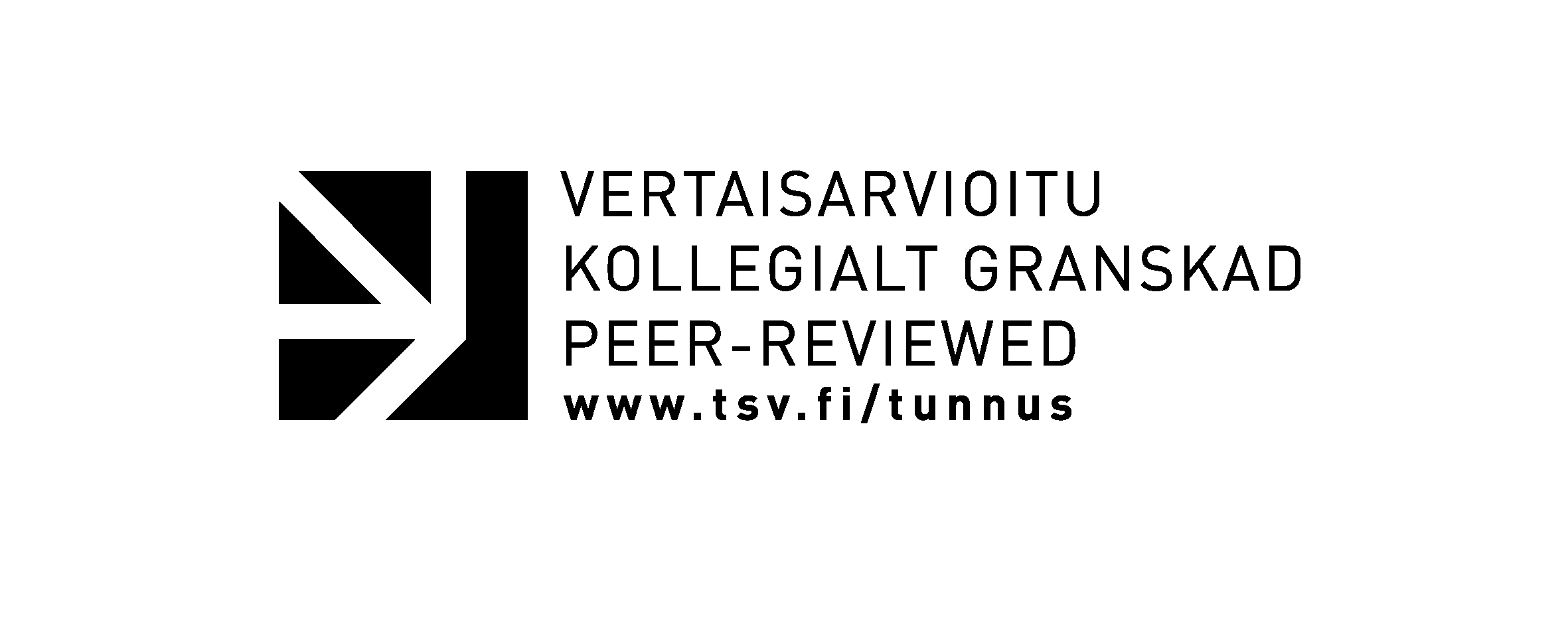Ethnologia Fennica is an international journal of the Association of Finnish ethnologists. The journal publishes original scholarly articles, review articles, congress reports, and book reviews that promote Finnish ethnological research.
Review Guidelines
Instructions for the Reviewers
When accepting the invitation to write a review statement, the reviewer understands and commits to the following guidelines:
All unpublished manuscripts are confidential material.
The manuscripts are not to be discussed with nor showed to third parties.
The contents of an unpublished manuscript are not to be used for one’s own benefit.
The reviewers are not be paid, but the task of a reviewer is an academic merit.
The review statement’s purpose is to aid the editor-in-chief and editorial board to decide on the submitted manuscript’s suitability for publication in the journal, and help the author to revise the manuscript in order to achieve as high a quality as possible. A copy or summary of the statement will always be sent to the author.
The expert reviewer writes a statement that takes a stand on the merits and shortcomings of the manuscript in relation to its contents, structure, and possible illustrations. The reviewer is asked to consider the following questions:
- Are the research question, material, and methods presented comprehensibly and with adequate accuracy?
- Does the author master the source literature related to his/her field of study, and is it utilized adequately and reliably?
- Does the presented theoretical, methodological, or conceptual framework connect to the empirical examples in an appropriate way?
- Does the author execute in the text the promises made in the introduction, and does the material support the conclusions?
- Are the results original and novel in relation to earlier research?
- Does the text form a balanced, justified and coherent entity by its structure?
- What is the relation between the text and possible illustrations; are the pictures informative and necessary?
- Is the manuscript comprehensible to both experts of the research field in question and a broader academic/non-academic readership?
The review statement should be written constructively, encouragingly and justifiably, keeping in mind that authors’ individual styles vary and multi-voicedness is part of academic research. If the reviewer finds the manuscript lacking in its theoretical framework, research literature, source material or methodology, he/she should give the author concrete suggestions for improvement.
The review statement should also bring forward overlap with earlier research, as well as possible suspicions of plagiarism and flaws in referencing previous research.
A typical review is two to six pages long. The review should be sent to the editor-in-chief according to the agreed timetable. The reviewer should use the following scale in his/her statement:
1) The manuscript can be published without any revisions.
2) The manuscript can be accepted with major/minor revisions; the statement should clearly point out the corrections needed.
3) The manuscript is not recommended to be published.
The reviewer may also give detailed feedback to the author by adding comments to the manuscript: click “Review” -> “New comment”. Before commenting, please change the user name: Click “Review” -> “Track Changes” / “Tracking” -> “Change User Name” -> change initials and the user name







